ZekeFilm is 10 years old in 2022! We’re commemorating it with a year-long Film Admissions series wherein each month, we take on a decade (give or take) of cinema, in chronological order. As is always the case with Film Admissions, participants are encouraged to watch a film within that month’s topic that they’ve never seen but have been meaning to. The bigger and more well known the film, the better! Then, together, we share our individual thoughts on our findings.

If our cultural memory of ‘30s films is of tinny voices, canned music, flapper-bedecked women, and a general sense of an art form groping for shape, then the ‘40s were that shape – all gloss, elegance, high craft, and a general sense that the very star-studdedness of the silver screen was visible proof that the movie factories were in fact churning out dreams. The visceral leap from one decade to the next is not unlike the visual escalation from the heavy grain and sweating countenance of early 70s films to the slick, backlit, bodaciously special-effected contraption that was the 80s. It’s the gut feeling that you’re watching a fledgling idea, knock-kneed and shambling, leap forward into some new and irrepressible, cash-swaddled singularity.
In some ways the ‘40s started in 1939, that venerated year of Hollywood’s first official post-sound growth spurt, festooned with all-time greats like The Wizard of Oz, Gone with the Wind, Mr. Smith Goes to Washington, Stagecoach… when the celluloid fluttering blurry through the projector finally lock-synched into a steady rhythm of predictably grand art. But more than any push forward provided by that year, it was Orson Welles and his “best toy train set in the world” that gave us Citizen Kane in 1941, a feat of filmmaking that’s both the classic example of cinching up all that came before it and a compendium of style and story choices that shone the way forward. The ‘40s feels in some ways like a great unpacking of all that this single film offered.
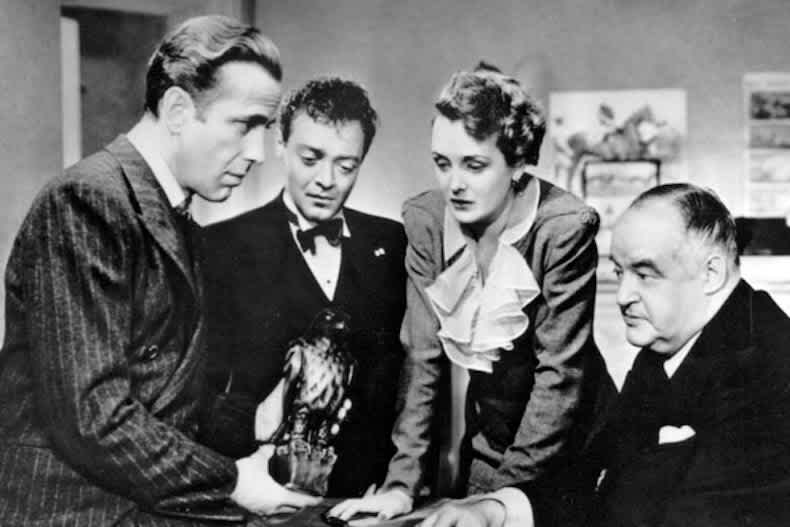
The decade can be crudely compartmentalized into its two halves: the World War II half, wherein studios answered the call to patriotism by invigorating the war genre while also sending some of its best and brightest into the fray; and the post-war half, epitomized by the year 1946, the single highest box-office year in the history of the movies. But even as musicals and comedies proliferated amidst the country’s jubilant victory, it was the dark and morally ambiguous world of film noir – so named by the liberated French upon finally being allowed to see what Hollywood had been up to – that most indelibly and lastingly marked the latter half of the decade and beyond.
Indeed, the Biz had reason to be gloomy, as post-war audiences were steadily on the decline, as the destructive opportunism of McCarthyism ran roughshod through the ranks, destroying lives and careers, and perhaps most debilitating, as the Supreme Court’s anti-trust rulings of 1948 successfully broke up the major studios’ sweet production-to-distribution monopoly – an act that took out the Studio System at the financial knees, all giving ample berth for the eventual rise of the cinema’s newest, most alluring threat – television sets in the home…
And yet, these ominous historical forces mean much less to us now, doing little to diminish the enormous breadth of entertainment offered by those ten years. Not that we’ve seen them all. The well is just too deep. To rectify the major blind spots in our own ‘40s film viewing, we’ve each watched a film we should have seen by now and commented on it below. So pack up the fedora, kick up your gams, and feast your peepers on some real dishes, see.
— Robert Hornak
High Sierra
Directed by Raoul Walsh/1941
by Jim Tudor
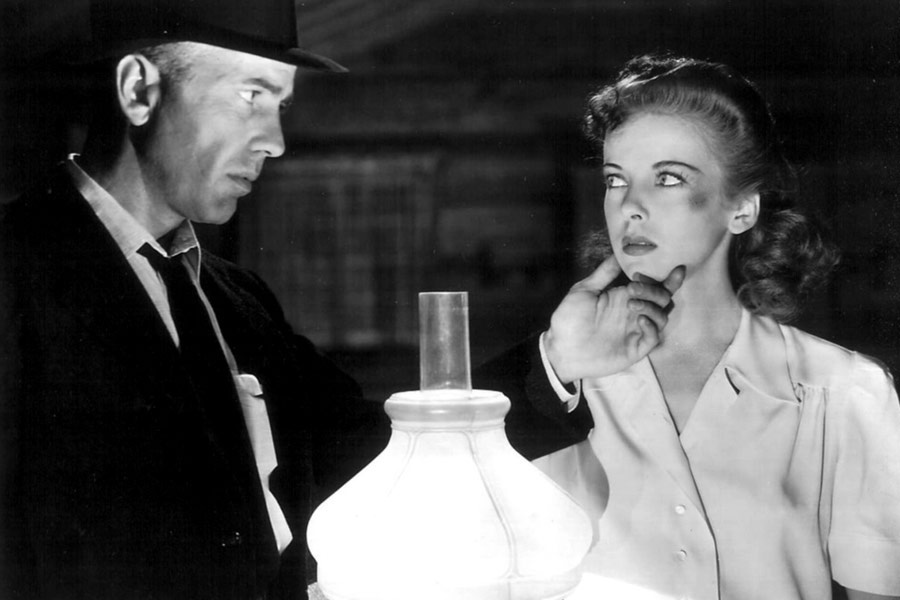
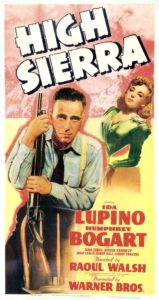
Though Humphrey Bogart had been knocking around Hollywood as a heavy throughout the 1930s, he’d yet to ascend that grand peak of “male lead”. That finally happened in the earliest part of the following decade with Warner Bros.’ production of director Raoul Walsh’s High Sierra. Word has it that Bogart had to really fight for the role, going as far as talking George Raft out of it and incessantly pestering big man Jack Warner to grant him the opportunity. Although it took some doing to break out of his well-established status as a supporting player, he got his way.
The part, that of the notorious, newly freed from prison Roy Earle, is indeed a rather rich one. The Earle role straddles both the gangster past and towering future of Bogart’s career at that time. In the story, forty-something Earle opts to immediately resume his life of crime by heading up the theft of a California luxury hotel’s vault. (“That smartbox is full of rocks!”) It does not go well, though tough guy Earle demonstrates an unlikely compassion several times along the way. Sometimes, such as his taking in an orphaned dog, he’s doing the right thing just ‘cause. Other times, such as when he pays for foot surgery for a poor handicapped 20-year-old girl, it’s rather conditional- Earle has his sights set on marrying her. The part makes perfect use of the actor’s sometimes scary, sometimes charming, sometimes intimidating, always screen-filling charisma. Without simmering Bogart as Earle, High Sierra simply isn’t nearly the film that it is.
Having never seen High Sierra prior to now, the film struck me as very good if not quite great. I had relatively high expectations since I saw Martin Scorsese profile it (alongside its 1949 Western remake, Colorado Territory, also by Roaul Walsh) years ago as part of his series A Personal Journey with Martin Scorsese Through American Movies (1995). I’ve seen it referred to as film noir several times, even though its release predates the conventionally cited dawn of the form, John Huston’s The Maltese Falcon, by ten months in 1941. In any case, High Sierra is a pretty terrific crime yarn.
Speaking of John Huston, the not-yet-legendary-director quite likely wet his whistle for hard boiled Bogie Noir in his co-writing of High Sierra. The other co-writer? That would be W.R. Burnett, who wrote the novel that the movie’s based upon. And that’s just the start of the notable names that churn through the opening credits. Walsh amassed a very impressive company of cohorts on both sides of the camera for High Sierra. Future War of the Worlds director Byron Haskin did special effects work on it. Alongside of Bogie onscreen is yet another important future director, then-actress Ida Lupino. Lupino plays a soul-weary taxi dancer adrift at the end of the dancehall trend. Her chemistry with Bogie isn’t exactly potent, but that may be by design. Although this is a crime-gone-wrong film, its central tension lies in the fact that she is attracted to him, but not vice versa. He’s too hung up on the other girl, whom he can’t have (Joan Leslie, from Yankee Doodle Dandy), as she’s not attracted to him.
That girl’s father is played by Henry Travers, who you may recognize as Clarence from It’s a Wonderful Life. Yet another ascending actor and later director, Cornel Wilde, turns up as well. And hamming it up as a cross-eyed groundskeeper is Willie Best (The Ghost Breakers). Some have claimed that the ominous dog of the film, “Pard”, was also “Toto” in The Wizard of Oz, but that’s not true. This dog’s real name was “Zero”, who is said to be Bogie’s actual dog. In the story, everyone who’s owned “Pard” has either died or is imminently going to die. Of course, the pooch latches himself onto our man Earle. (Uh-oh…)
If High Sierra is exceptional for one thing, it’s the way it subtly subverts common perceptions of the west in film. It all culminates with Bogart taking to the tall, steep, bald rocky hills in Sierra Nevada as he’s pursued by an armada of lawmen and locals. In this climax, the urban criminal is forcibly transplanted into stony nature, an environment even less forgiving than the one he’s accustomed to. The saloons and homesteads of the not-too-distant Western yesteryear have been replaced with swanky elite hotels and resorts. It’s one American dream traded for another far too quickly. For a guy like Earle, it’s all equally foreign and equally fatalistic. Bogart, on the other hand, will only continue to ascend.
Notorious
Directed by Alfred Hitchcock/1946
by Max Foizey
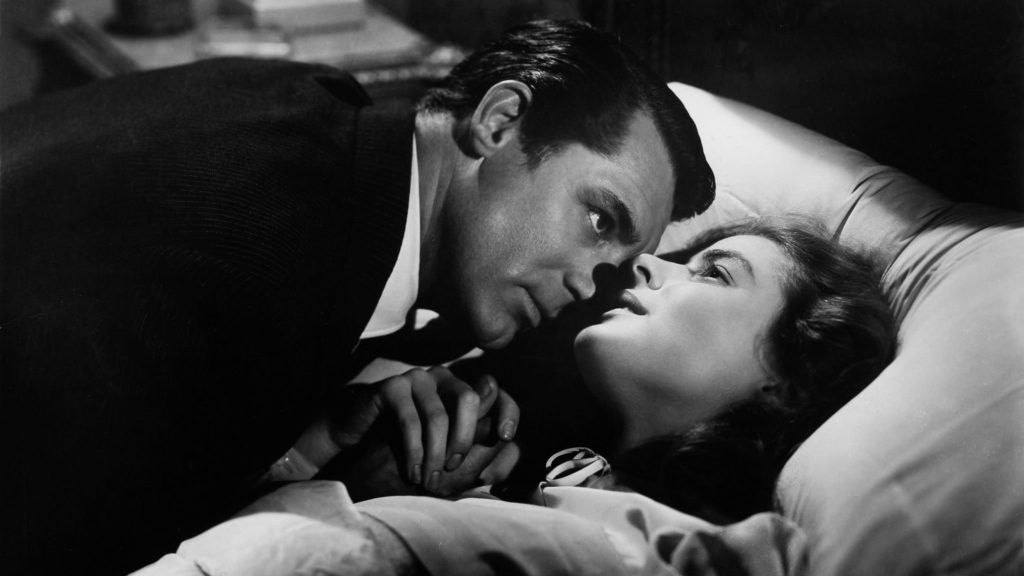
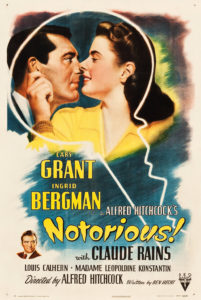
Alicia Huberman (Ingrid Bergman) is a free-spirited young woman who enjoys parties, music, drinks, and the company of men. A handsome man named T. R. Devlin (Cary Grant) catchers her attention at one of her parties in Miami, Florida. It’s revealed that he is a government agent tasked with recruiting Alicia for a top-secret mission. Alicia’s father was recently convicted of being a Nazi spy, and Uncle Sam, having bugged his house, discovered she was sympathetic to America after hearing her make statements to that effect during arguments with her father.
The mission is dangerous. Nazis have fled to Brazil after the war. There is intel that they’re up to something nefarious. Our country needs more information. Devlin and Huberman await details of their mission in Rio de Janeiro, where they get close with each other. Their powerful attraction is complicated by Devlin’s knowledge of Huberman’s promiscuous history. He tries to keep her at arm’s length though it is obvious he wants nothing more than to hold her close. Alicia falls hard for T. R., imagining what it would be like to leave her hard-partying lifestyle behind to live a more domestic life.
One of Alicia’s father’s friends, Alex Sebastian (Claude Rains), is the target of the investigation. The government wants Alicia to seduce Alex in order to spy on him and provide information about what he’s up to. The government figures Alicia is perfect for this mission, given how sexually active she’s been, and the fact that Alex was in love with her years ago. Alicia is offended that the government, and more specifically Devlin, would ask her to do such a thing. She wants him to tell her he doesn’t want to her to do it. He doesn’t want her to. He doesn’t tell her. Crestfallen, Alicia agrees to the assignment. They’re both upset with each other as they embark on the life-threatening mission that only gets more perilous as time passes.
After an orchestrated “chance meeting” brings them together at a riding club, Alex is overjoyed to have Alicia back in his life. It seems Alex really does love Alicia, and while the feeling is not reciprocated, Alicia plays her part well, and soon the two are engaged. Alicia quickly ingratiates herself with Alex and his friends, providing details of names, faces, and conversations back to her contact Devlin. Devlin, in love with Alicia himself, is angry that she’s doing what her country asked of her – namely, sleeping with Alex. Alicia is angry that Devin went along with orders to put her in this situation. Meanwhile, Alex feels that Alicia reentering his life at this moment and finally falling for him is strange. He is very happy about it but can’t help but feel something isn’t quite right. Have you ever had a relationship with someone you consider out of your league? It can be extraordinary, but feelings of inadequacy and jealousy can sink your relationship. This is where Alex finds himself, constantly worried that Alicia is cheating on him, especially when he sees how close she is with a certain Mr. Devlin. It doesn’t help that Alex’s mother (Leopoldine Konstantin), with whom he is very close, doesn’t trust her motives.
It’s striking how disposable Alicia is to the government, and how little they care about the psychological, physical, and emotional impact of what they’re asking her to do. It works both as a commentary on how the government views its citizens as wartime means to an end, as well as how classically undervalued women are in society.
Ben Hecht’s script for Notorious is interested in many themes, from trust in your government to trust in your romantic partner, to trust in your family and friends. Alcohol is a factor, as Alicia’s history with drinking is a plot point, as well as wine at parties and even wine bottles themselves. A key is a major plot device, almost as if it could be used not just to unlock a wine cellar, but the motivations of the characters as well.
Cary Grant isn’t very likable as T. R. Devlin, playing him stoic to a fault. When Hitchcock introduces Devlin, we don’t see Grant’s face at all. The camera is kept focused on the back of his head, signifying his outsider status from Alicia’s circle of friends, and perhaps his shadowy government connection as well. That’s just one of Hitchcock’s many stylistic flourishes on display. Nobody could manipulate an audience quite like he could, and there are scenes in Notorious that are among the most excruciatingly suspenseful I’ve ever seen.
Hitchcock manages to get around the production code’s rules of the day for no kisses lasting more than three seconds by having Grant and Bergman pause every three seconds during a two-and-a-half-minute kiss. The passionate result is undeniably sexy. Ingrid Bergman looks ravishing in costume designer Edith Head’s iconic outfits. She imbues Alicia with both regret and resolve, creating one of her best, most complex performances of her legendary career.
Claude Rains has the most intriguing character in Alex Sebastian. He’s a Nazi, so he should not be sympathetic at all. But we see that he truly loves Alicia, and we know she’s using him. We see how he’s dominated by a controlling mother; a plot element Hitchcock would return to in his masterpiece Psycho. Rains uses his considerable talent to deftly provide a performance of a villain who conveys true pathos to the audience.
Roy Webb’s score in endlessly inventive, used by Hitchcock in dizzying fashion, giving viewers atmosphere aplenty. Fragmented guitars, drums, and an occasional Brazilian sound highlight jagged scenes of love, fear, and desperation. Notorious was one of the few Alfred Hitchcock films I hadn’t seen before I decided to write about it for this article. But the plot seemed familiar to me. Had I seen a remake, I wondered? It turns out this framework has been used as the basis for many stories since, including the Senate Spy episode in the second season of Star Wars: The Clone Wars, and John Woo’s Mission: Impossible 2. Yet Notorious stands alone, a masterpiece in every respect.
The Red Shoes
Directed by Michael Powell and Emeric Pressburger/1948
by Jeffrey Knight
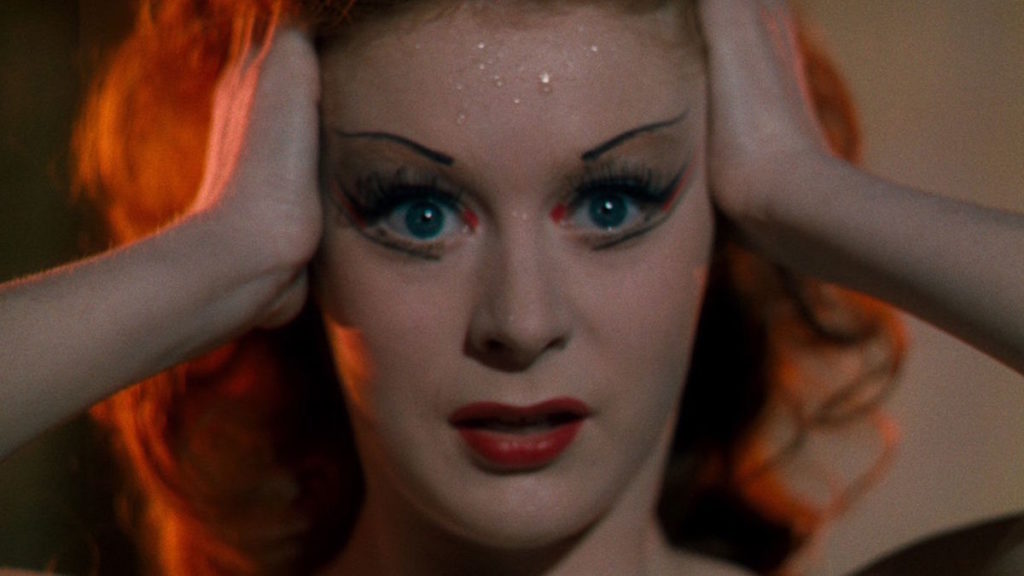
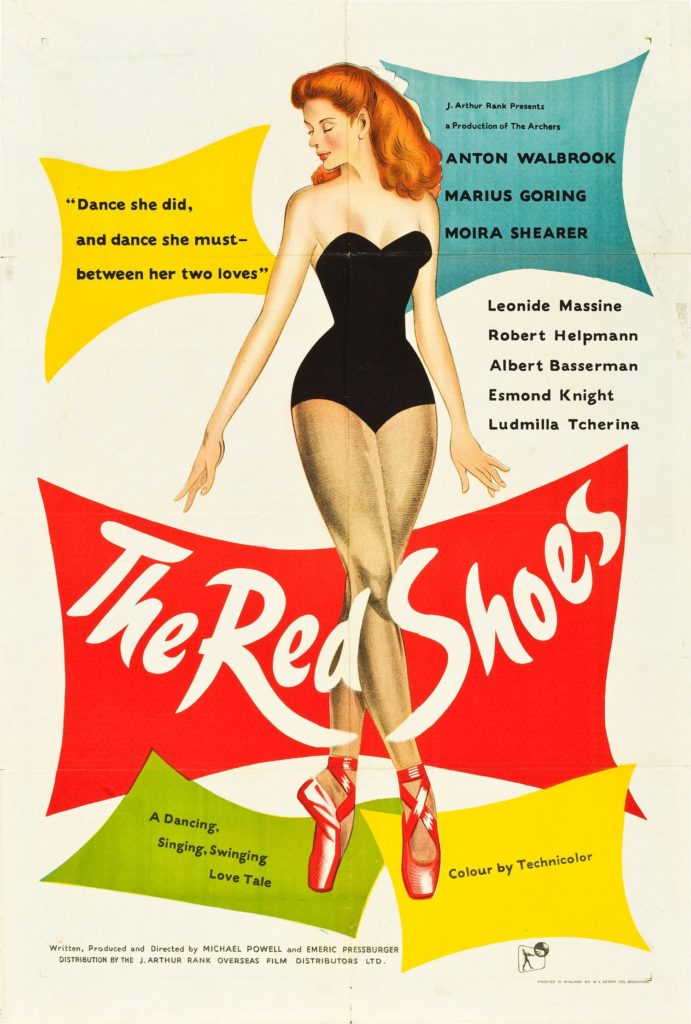
A man asks a young ballerina, “Why do you want to dance?” She turns the question back around at him: “Why do you want to live?”
The ballerina, Victoria Page (real-life ballerina Moria Shearer) does not want to dance. She needs to. Needs to dance as much as she needs to breathe and eat. There is no question about it. The man is Boris Lermontov (Anton Walbrook), owner and operator of the world-renowned Ballet Lermontov, and that is exactly the commitment he is looking for in one of his dancers. He demands no less than total subservience to the dance, to their art. If Victoria is willing to devote the whole of her being to that commitment, he will make her into the greatest ballerina that ever was.
But there is a problem. Victoria is falling in love with Julian Craster (Marius Goring), the company’s young and enthusiastic composer, and he is falling for her. Victoria has to make a choice between her love and her art, and the choice is breaking her heart in two. This seems like, admittedly, a false choice. Why can she not have both? But it is the stuff of powerful melodrama, and Shearer’s performance sells the notion that whichever choice she makes, Victoria will not be able to live with the decision.
Craster has written a ballet for her, The Red Shoes, based on a tale by Hans Christian Andersen. The ballet tells the story of a young woman who becomes entranced by a pair of red shoes. When she puts them on, they allow her to dance higher and faster than ever. However, the shoes will not let her stop dancing. “Time rushes by, love rushes by, life rushes by, but the red shoes go on.” Lermontov explains. And in the end, she dies.
The performance of The Red Shoes forms the central passage of Powell and Pressburger’s eponymous movie. It is a seventeen-minute long tour de force that presents the ballet not as an audience would see it, but from within the minds of the dancers and musicians who perform it. It is a stunning fantasy sequence that is a showcase of color, music, and dance. It is cinema in its purest state. That’s why it has resonated with so many filmmakers and fans in the decades since its release.
The movie’s influence cannot be understated. Gene Kelly purportedly showed the movie over and over again to his collaborators as they worked on An American in Paris. Martin Scorsese has called it one of the most beautiful color films of all time, and has quoted from it in his movies — compare the scene where Craster arrives at the ballet company for the first time to the scene where Rupert Pupkin arrives at the television station in The King of Comedy. Francis Ford Coppola makes more direct homages to it throughout his 2009 film Tetro, with that movie’s fantasy ballet sequences.
Michael Powell wrote in his 1986 memoir: “We had all been told for ten years to go out and die for freedom and democracy… and now that the war is over, The Red Shoes told us to go out and die for art.” As poetic a notion as dying for one’s art is, I don’t know that is the message the film is trying to convey. However, The Red Shoes certainly gets at the truth that one cannot live without art.
The Magnificent Ambersons
Directed by Orson Welles/1942
by Robert Hornak
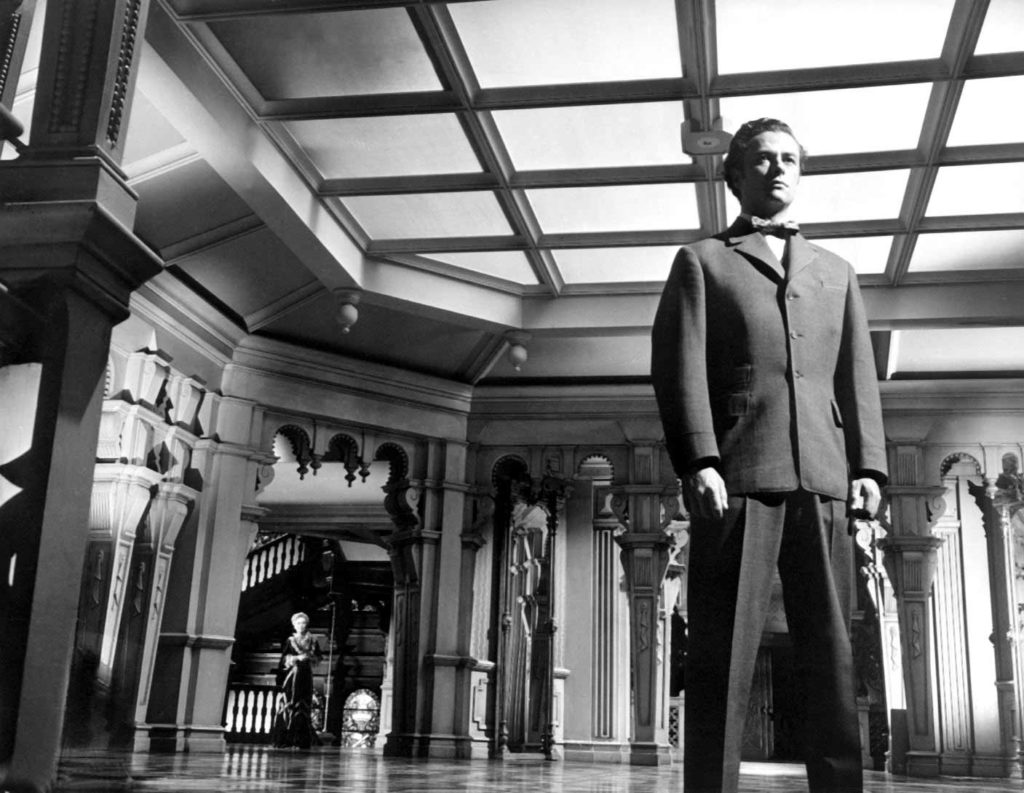
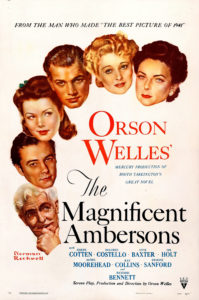
I’d willfully skipped Orson Welles’ sophomore film out of a personal distaste for movies set at the turn of the 20th century that aren’t Westerns. It’s not a point of pride, but there’s always something inherently “boring” to me about dapper longcoats, carriages, silky stovepipe hats (people who say “stovepipe hats” are derided in this film, and I’m okay with that), and that world has simply never appealed to me. The extent to which I was interested in this movie at all, before now, had mostly to do with its tenuous connection to Wes Anderson’s The Royal Tenenbaums (2001), a favorite film that I knew shared some transposed elements, most obviously the title construction, but also the distinctive spired turret on the family home and the lengthy, narrated setup that launches the movie. (Look for the shot of Joseph Cotten changing out his hat, literally mirrored in a similar move by Owen Wilson in the Tenenbaums opening.) Even the sameness of the fact that both movies are deep dives into what went wrong inside a family of such prominence and promise wasn’t enough to make me sit with this one.
So I came at The Magnificent Ambersons as you would an old book you’ve seen on the shelf, pondered reading, but never took down. To finally give it the old earnest try means not just blowing away the caked-on dust, but the dust of inertia itself, the habit of denial that’s crusted over the top of the very idea. Needless to say, anyone who’s seen the movie will know all of my dissing was a fool’s bellow. Not only is it wonderfully, if not quite wholly, a Welles work, which means it hums with a baked-in watchability and a sense of richness and blackness that never gets too emotionally costly as long as the veneer of its own astute filmmaking keeps you at a distance (this is another kinship to Mr. Anderson’s work), but it’s also satisfactorily timeless as a de facto diptych alongside Kane: the focus on the downfall of one man – Kane – is diffused across an entire clan with much the same diagnosis of predictably self-inflicted hubris. the miracle is that as diffuse as that analysis gets, you’re always sure that who you’re watching at any given moment is the worst off of the whole bunch.
That’s a testament to not just Welles’ supreme adaptation of Booth Tarkington’s book, but to the depth and truth of the ensemble’s performances. Everyone is playing it to the theatrical hilt, but the prim, ironic-nostalgic preamble, set up nearly like a storybook, allows for the histrionic forays, especially from Agnes Moorehead as Aunt Fanny, whose deepening hurt, isolation, and possible psychosis becomes a raging stand-in for the house itself. I stared at the figures moving in and out of the deep black shadows of that monstrous mansion, the pulse of some otherworldly id imbuing the place with a creeping agenda of its own, and felt the darkness of something unexplainable finally secure its tendrils around the life of the family proper until it all ended bedside, with the comeuppance of George Minafer, pulling the curtains closed on this cautionary tale of squabbles gone cancerous, feeling that the tale had been told unto perfection…until that RKO-mandated, tack-on of an ending, almost mocking in its un-Wellesian flatness, pulled a tendril-gripping murder of its own. And yet the studio ending doesn’t do it in; it was the first, but certainly not the last of Welles’ studio-mangled edits, and it is not alone as an exemplary butchering that yet cannot diminish the greatness of the art itself.

